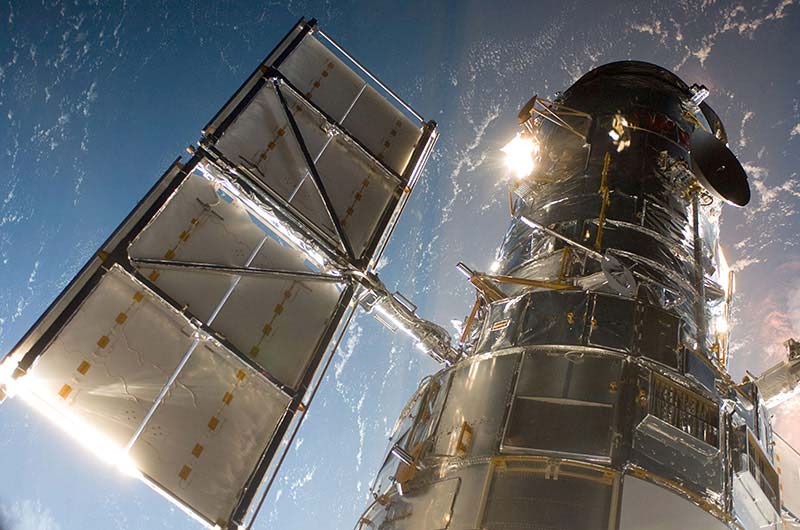Why Are Space Telescopes Better Than Earth-Based Telescopes?

The Hubble Space Telescope has beamedhundreds of thousands of images back to Earth over the past two decades. Onemight call it the most skilled paparazzo, snapping countless images of thestars.
Thanks to theseimages, scientists have been able to determine the age of the universe andshed light on the existence of dark energy. These extraordinary advancementshave been possible because the Hubbleimages surpass those taken by Earth-based telescopes.
While ground-based observatories are usuallylocated in highly elevated areas with minimal light pollution, they mustcontend with atmospheric turbulence, which limits the sharpness of images takenfrom this vantage point. (The effects of atmospheric turbulence are clear toanyone looking at the stars ? this is why they appear to twinkle.)
In space, however, telescopes are able to geta clearer shot of everything from exploding stars to other galaxies.
Another disadvantage for ground-basedtelescopes is that the Earth's atmosphere absorbs much of the infrared andultraviolet light that passes through it. Space telescopes can detect thesewaves.
Newer ground-based telescopes are usingtechnological advances such as adaptive optics to try to correct or limitatmospheric distortion, but there's no way to see the wavelengths that theatmosphere blocks from reaching Earth, according to the Space Telescope ScienceInstitute (STScI), which manages the Hubble research program.
One downside to spacetelescopes like the Hubble is that they are extremely difficult to maintainand upgrade. The Hubble is the first telescope specifically designed to berepaired in space by astronauts, while other space telescopes cannot beserviced at all.
Breaking space news, the latest updates on rocket launches, skywatching events and more!
NASA scientistsestimate that the telescope will only be able to keep taking pictures for fivemore years.
- Images - 20 Years of the Hubble Space Telescope
- Hubble Telescope Spies Majestic Space Mountains
- What Will NASA Do With the Retired Space Shuttles?
Join our Space Forums to keep talking space on the latest missions, night sky and more! And if you have a news tip, correction or comment, let us know at: community@space.com.
